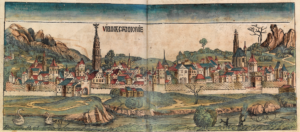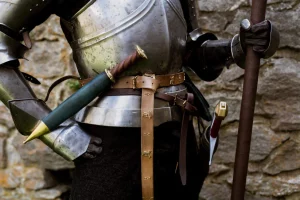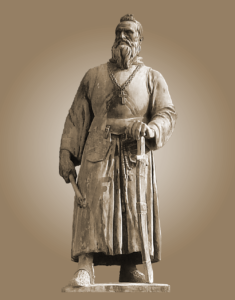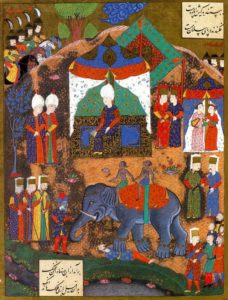The Road To The Battle of Mohács 1526

The interpretation of Mohács has always been a dividing question


A few general words about the situation
Mainstream historians believe that during the 36 years of the Jagellonians’ reign, the once strong and centralized kingdom of King Matthias Hunyadi (r. 1458-1490) became a weak, fragmented, and conflicted country. However, there are already a few of them who dare say that it was not quite like this. Under King Ulászló II (r. 1490-1526), the barons drastically reduced the king’s room for maneuver, and under King Louis II, who came to the throne as a child, they sought to influence the ruler directly. Meanwhile, in the 1520s, Hungary was torn apart by internal divisions: although the nobles had united in the Peasants’ War of 1514 to restore serfdom to its medieval status, the aristocracy and the common nobility were also locked in a bitter struggle.

The struggle of the leagues around Palatine Báthory István and the Transylvanian Voivode Szapolyai János was, of course, to influence the young king and to crush the power of the other side, leaving no time or energy for the real problems of the country. Although Louis was surprisingly energetic for his young age in his efforts to break out of his hopeless situation, the disinterest of the nobles and allied rulers – Archduke Ferdinand Habsburg of Austria and Emperor Charles V (r. 1519-1556) – and the financial pressure of the Fuggers condemned the king to inertia.

The situation was becoming dangerous as the new Sultan of the Ottoman Empire, the young Suleiman, planned to conquer Hungary, which had successfully resisted him for so many decades. The catastrophic situation of the kingdom became clear to all after the Turkish campaign of 1521, when the key to the fortress system, Nándorfehérvár. The stinging defeat of 1521 awakened the conscience of the Hungarian Estates for a few months, but by and large skirmishing remained more important than defending the frontiers.

In the months before Mohács, the court of Louis II had received several warnings of the impending Turkish campaign: the Serbian Bakics Pál, who had fled to Buda, had already announced the Sublime Porta’s plans at the end of 1525, but developments in European politics also made Suleiman’s attack likely. Francis I (r. 1515-1547), the ‘most Christian’ of the French kings, had formed an alliance with the Ottoman Empire in an attempt to break the emerging Habsburg hegemony in Europe; Louis II, as the dynasty’s closest ally, could therefore well expect an attack from the south, which was in any case to be expected after the events of 1521.

Despite all this, neither Ferdinand nor Emperor Charles V later considered it important to send help to Louis, nor did their own countries excel in this area. Although recruiting had begun in Bohemia – another Jagiellonian possession – in the spring, the Estates negotiating at the Diet of Cracow in 1526 were again faced with ‘more important’ matters than the defense of the frontiers.

But the Turkish military machine was not working perfectly either, and Suleiman’s march wasted precious days in the swampy region of the Morava River in Serbia, only reaching Nándorfehérvár (Belgrade) at the end of June. No one could make use of this time, however, and it is significant that Louis had only the 50,000 gold pieces he had received from Pope Clement VII and a letter of support from King Henry VIII of England (r. 1509-1547).

The situation was similar to that of 1521: the king again had no money to raise an army, and the nobles were again reluctant to go to war. Louis II ordered an assembly near Tolna on 2 July, but he himself did not leave Buda until 20 July. By this time, Suleiman had crossed the Száva River, besieged Pétervárad (Petrovarad), and captured Újlak on 27 July. When the Eszék (Osijek) garrison surrendered without a fight, the Sultan reached the Dráva River at the beginning of August without any serious resistance.

Obviously, if there had been a chance, the royal armies would not have set out against the Turks as they did in 1521; in this campaign, however, Suleiman’s aim was not to capture a fortress but to fight a decisive battle, after which he would certainly have forced the Hungarian monarch into a fiefdom.

Left with no choice, the king marched to Tolna on 6 August and camped near Mohács on 24 August to await the enemy’s approach; Louis was able to mobilize an army of 24,500, mostly Hungarian nobles and mercenaries, as well as auxiliaries of the papal envoy Burgio. The royal army also had 85 cannons. Nevertheless, Louis’s situation was not hopeless, for there were also considerable armies marching from Bohemia and Slavonia, although he could not count on the help of Voivode Szapolyai János.

The Transylvanian voivode, camped in the east of the country, was later accused by many of abandoning his king – and even of saving his army for a later election – but in reality conflicting orders from the king and the slowness of recruitment in Transylvania made his intervention impossible. Far more fatal than Szapolyai’s absence was the fact that the Hungarian army allowed Suleiman’s forces to cross the Dráva River, which could have given Louis a significant advantage in terms of positioning.

Although the swampy battlefield 7 kilometers from Mohács was a good choice – as it exhausted the marching Ottomans – Tomori Pál and Szapolyai György, the two commanders in charge, made several mistakes that further worsened the already bleak chances. (Let me note, that the role of Tomori recently seems to have been restored, he made no fatal mistake.) One such unfortunate decision was the fact that the Christian army entered the battle on 29 August, even though it was expecting the arrival of two large corps – the Croatian Bán Frangepán Kristóf and the Bohemian forces – in the following days. Thus, the Turkish force of at least 60,000 men – and 150 cannons – was matched by only 24,500 Hungarian soldiers.

King Lajos (Louis II)

King Louis II (1506 – 29 August 1526) was King of Hungary, Croatia, and Bohemia from 1516 to 1526. He was killed during the Battle of Mohács against the Ottomans, whose victory led to the Ottoman invasion of Hungary. Some say he was murdered with a three-edged dagger, but please forgive me, because there is a lot of gossip that has accumulated during the five centuries of debate on these issues. So I humbly ask for everyone’s patience.










Queen Mary of Habsburg





Habsburg Maria had scattered the treasure of the Hungarian kingdom, while she had vehemently attacked the idea of a peace treaty between the Ottoman Empire and Hungary. Such a treaty was not unheard of, however, as the Turks had similar truces with Venice and Poland at the time. She did not take care of the unpaid soldiers on the Military Frontier and was accused of overspending in such a dire situation.


But his wife and her Austrian party insisted that he should fight the Turks on a grand scale, as befitted a defender of the faith. It was known that Sultan Suleiman would have been satisfied with some taxes from Louis and a corridor to Vienna… Everyone knew that Louis’s action in fighting him was suicidal.


The history of the battle is described on my page, let me add just one piece of information to it. On the road to Mohács, the young king sent several letters, here is the last one he wrote when he arrived. King Lajos II’s last letter from the Mohács camp is probably the most famous item in the Batthyány archives. Unfortunately, the original letter has not been preserved, but we have a 19th-century photograph of it.

It says: “Lajos, by the grace of God, King of Hungary and Bohemia, etc. Most reverend, great, illustrious, sincerely beloved, faithful followers! We have already written to you once today and sent one of our chamberlains to you with the request that you hasten to us. We now beckon to you again and command you to hasten to us with the utmost haste. The enemy is burning the land in many places before our very eyes. We are waiting for you, and as soon as you arrive, we will attack with God’s help. So hurry as fast as you can. Written in our camp at Mohács, on the Saturday after the feast of St Bartholomew [25 August], 1526”. Below: Ludovicus rex manu propria, cito, cito, cito [King Louis in his own hand, quickly, quickly, quickly]. After that, postscript: “Make haste, so that if you cannot arrive here before then, you may arrive here tomorrow at dawn!”




A side note about Czettrich, Horváth, and Majláth
Their job was to keep fresh horses for the king and also to guard his life. All of them survived the battle, unscratched. Horváth Gáspár’s wife was a confident of the Queen who helped to carry out diplomatic assignements, too. After the battle, Horváth fled to Szapolyai János, and it seemed he was not willing to face the Queen so easily. However, he visited the Queen in Pozsony as an envoy of Szapolyai János, the voivode asked for the Queen’s hand to legitimize his claim to the throne. Allegedly, Queen Maria was considering it for a short time, then turned it down. After this, Horváth never returned to face Szapolyai who took away Horváth’s lands for this.
As for Majláth, he was richly awarded by Szapolyai and he was even appointed as Voivode of Transylvania by Szapolyai…
Sebastian Ulrich von Czettritz (die Burg) Neuhaus was a Bohemian mercenary, the Queen’s knight who was sent by Maria to safeguard his husband in the battle. My question: Why did Czettrich just watch the death of King Louis and Aczél? There is another interesting bit: when the king’s body was found (separated from his armor, interestingly enough), there were three marks on his armor which had been “pierced by a weapon of German or Czech fashion”. It was most likely a round dagger. These three- or four-edged daggers could pierce any armor, and the Turks didn’t use similar weapons.




Archduke Habsburg Ferdinand



Here are more details of Ferdinand’s life:

Emperor Charles V


George von Brandenburg



All current sources concur that he harmed the formative personality of the juvenile Louis. He exposed him to excessive alcohol consumption and promiscuity. After his removal from Louis’ court in 1521, the youthful monarch moderated somewhat, though it seems it may have been too little, too late.
Anton Fugger


We can add to our list Thurzó Elek, who was appointed treasurer in 1521.




Szerencsés Imre










Bakócz Tamás





Pope Clement VII



Tomori Pál







Szapolyai János



Photo: Farkasven


We have another high lord who might have the motivation to get rid of King Louis. Was he not also the appointed tutor of the young King Louis? Báthory István (1480s-1530), the Palatine of the country, the corrupt oligarch, who had already been found guilty of fraud, was indeed present at Mohács, and some historians blame him for the military mistakes made during the battle. He survived the battle because he escaped on the rested horse of his servant, Kecskés Pál. (It is said that he later ransomed him from the Turks).

On his way home, Báthory met some high priests fleeing from Pécs with the immense treasury of the church. He robbed them and hurried to Pozsony. He owned the castle of Dévény there and gladly sided with the usurper Ferdinand of Habsburg, who could enter the kingdom undisturbed only because Báthory let his army pass under the castle of Dévény in 1527.


Before talking about Sultan Suleiman, we must consider the League of Cognac as a factor in the fall of Hungary. The War of the League of Cognac (1526-30) was fought between the Habsburg dominions of Charles V- primarily the Holy Roman Empire and Habsburg Spain – and the League of Cognac, an alliance that included France, Pope Clement VII, the Republic of Venice, the Kingdom of England, the Duchy of Milan, and the Republic of Florence. It was the French king’s diplomatic success that turned Sultan Suleiman against the Hungarians and the Habsburgs. He was urging Suleiman to attack Vienna via Hungary.
Sultan Suleiman


Since the fall of Nándorfehérvár (Belgrade) in 1521, Suleiman had assessed the situation very well and used the inviting opportunity to take revenge for the failure of his great-grandfather Sultan Mehmed II, who had been defeated by the strong defense of Hunyadi János.


1. He was the one who put an end to the sovereign Hungarian Kingdom by killing King Louis I at Mohács in 1526 so that Hungarian independence was lost and the Habsburgs were able to gain power.










Let us not forget that these wars were not only about Hungary but also about the rest of Europe. Hungary just happened to be in the way.

Szerémi’s Chronicle


“Now, readers, please pay careful attention to my statement regarding King Louis’ death. When examining his body, we discovered three stab wounds inflicted by a Czech sword. As priests, we were only permitted to privately inspect the body and were forbidden from disclosing this information due to Voivode János (later King Szapolyai).
This is how King Louis’ death occurred. After the death of King Szapolyai, we can reveal the truth. A Hungarian warrior heard of King János’ (Szapolyai) death and exclaimed, “Now is the time for me to reveal the truth about the death of King Louis.” And he proceeded to speak as follows:
‘My beloved brothers, pay heed and learn about his death from me as it had happened to him. We, Szepesi György (my remark: Szapolyai György was the co-general of the Hungarian army at Mohács, he was the brother of Szapolyai János. György said to have disappeared in the battle), Tomori Pál, the Commander, have taken King Louis through the swamp, he was healthy and unhurt. Czetterich was with us, too.
And upon arriving at a village near the market town of Báta, Szepesi György suggested, “Would you like to take some rest here, my lord and king? You may dismount your horse and remove your armor while we prepare a meal for you.” The king, who had heard this proposal, welcomed it, and the Commander (Tomori) agreed.
When the king followed orders, Tomori Pál left with the king’s permission. György stayed with the king and said: “You, king, you dancing whore, you have lost Hungary, our rights, and Prince Lőrinc’s possessions. You will die.” György drew his sword and stabbed the king three times. The King fell to the ground, sitting in the room only in his shirt.
When Tomori Pál found out that he had killed him, he immediately rushed at György and exclaimed, “You killer rogue!” Tomori was wearing armor because he was guarding the king, so he hadn’t taken it off. He had just left his quarters and gone to his servants. Pál killed György on the spot. Szepesi György had a vice-lieutenant with a large group, and when he heard that his lord was killed, he immediately attacked the Commander and his men, resulting in Tomori Pál’s death. Three of them were dead, the Hungarian warrior remarked, by the time it was already nighttime on what was Thursday. The night was incredibly dark.
They rushed to bury Pál and György in a common grave at the village church. They removed King Louis’ clothes and transported him to the lake where they created a grave for the unfortunate king on the shore and left him on the bank of the river.”

The Battle of Mohács was a milestone in Hungarian history.
Wouldn’t it be important to uncover the truth, no matter the feelings it may stir up?

Dear Readers, I can only make this content available through small donations or by selling my books or T-shirts:
Please, support me with a coffee here:
You can check out my books on Amazon or Draft2Digital, they are available in hardcover, paperback, or ebook:
https://www.amazon.com/dp/198020490X
or at https://books2read.com/b/boYd81


My work can also be followed and supported on Patreon: Become a Patron!http://Become a Patron!


https://hungarianottomanwars.myspreadshop.com/all

